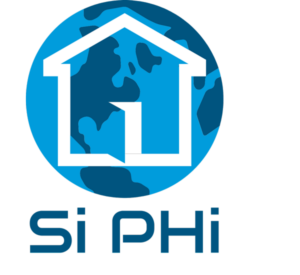
Partnerships
Aligned organization partnerships
Insurance industry
Relationship Dynamics: The partnership between SiPHi and the insurance industry is symbiotic. Home inspectors play a pivotal role in assessing the condition and potential risks associated with properties, thereby aiding insurance underwriters in their risk assessment. Conversely, the insurance industry, by recognizing and endorsing the role of inspectors, can provide a substantial boost to the inspection profession.
Insurance Inspection Objective: Leverage the expertise of SiPHi’s inspectors to provide detailed assessments for insurance underwriting, ensuring accurate risk determination for properties.
Benefits to Insurance Industry: More comprehensive risk analysis, potential reduction in future claims, and consistent inspection standards.
Benefits to SiPHi Inspectors: Increased volume of inspection jobs, heightened professional stature, and recognition as essential stakeholders in the property insurance process.
Business Insurance for Inspectors Objective: Collaborate with insurance providers to tailor business insurance packages that reflect the real risks and nuances of the inspection profession.
Risk Mitigation Initiatives: SiPHi can work with the insurance industry to:
- Define clearer roles and responsibilities for inspectors, leading to a reduction in ambiguous liability scenarios.
- Develop standardized documentation and reporting templates that minimize the chance of oversights or misinterpretations.
- Offer training sessions focused on common risk areas and how to avoid potential pitfalls.
Benefits to Insurance Industry: Reduced ambiguity in policy coverage, potential reduction in claims, and increased understanding of the inspection profession’s nuances.
Benefits to SiPHi Inspectors: Better-tailored insurance packages, potentially reduced premiums, and a clearer understanding of their coverage and liabilities.
Real estate industry
Role of Inspectors in Real Estate Transactions: Inspectors play a crucial role in real estate transactions by providing detailed assessments of a property’s condition, helping buyers make informed decisions and protecting their investment. They offer both buyers and sellers transparency and assurance regarding the state of a property.
Benefits for Buyers:
- Risk Mitigation: Helps potential homeowners identify hidden issues that could lead to future repair expenses.
- Negotiation Tool: Provides a basis to renegotiate a property’s price or request repairs based on identified issues.
- Peace of Mind: Offers assurance that they are making an informed purchase.
Benefits for Real Estate Agents:
- Value Proposition: Enables agents to differentiate themselves by offering comprehensive services to clients.
- Negotiation Leverage: Equips agents with an objective tool for property price negotiations.
- Reduced Post-Sale Liabilities: Minimizes potential disputes post-sale as both parties are aware of the property’s condition.
Challenges and Concerns:
- Varied Perception of Inspections-While some agents see inspections as a valuable part of the transaction process, others might view them as hurdles, fearing potential deal breakers.
- Potential Conflicts of Interest-Situations where agents might recommend specific inspectors can lead to perceived or real conflicts of interest.
- Strong Lobbying Influence-The real estate industry’s robust lobbying presence can shape regulations and public perception, impacting the inspection industry directly.
Collaborative Initiatives:
- Education and Awareness-Jointly host seminars, workshops, and webinars focusing on the importance of home inspections for both agents and buyers. Highlight the long-term benefits and value addition, emphasizing the role of transparency in building trust.
- Standardized Reporting-Collaborate to develop standardized reporting formats, ensuring that inspection reports meet the needs of real estate agents and their clients without overwhelming them with technical details.
- Ethical Collaborations-Create guidelines and best practices to ensure that any collaboration between inspectors and real estate agents remains ethical and transparent, avoiding conflicts of interest.
- Joint Advocacy-Engage in joint lobbying efforts to advocate for regulations and practices that benefit both industries. This might include promoting the universal adoption of inspections in real estate transactions.
- Networking Opportunities-Organize joint industry events to foster relationships between inspectors and real estate professionals, encouraging understanding and collaboration.
Inspection Industry
Targeted Messages for Each Stakeholder:
- State Regulatory Agencies: Emphasize the importance of standardized practices and reciprocity for inspectors across states, highlighting the benefits for consumers and the real estate market. Encourage the creation of a regulatory body if none exists.
- National Inspection Organizations: Highlight the collective strength that can be achieved through unified standards and practices. Stress the benefit of having a consistent voice when interfacing with other industries and regulatory bodies.
- Local Inspection Organizations: Acknowledge the critical role they play in addressing region-specific challenges and needs. Emphasize the importance of their localized expertise in shaping national standards.
- Facebook Groups of Inspectors: Recognize the power of community and the grassroots insights that such groups offer. Emphasize the importance of their collective voice in shaping the industry’s future.
- Service Providers to Inspectors: Highlight the mutual benefits of collaboration, including potential business growth and improved service offerings tailored to inspectors’ evolving needs.
- Other Industry Leaders: Recognize their influence and vision for the industry. Emphasize the value of pooling resources, knowledge, and influence for shared objectives.
- Individual Inspectors: Emphasize the importance of their on-the-ground experiences and insights. Highlight that SiPHi aims to enhance their professional capabilities and ensure their voices are heard at the highest levels.
Invitation Structure:
- Introduction: Briefly introduce SiPHi and its objectives. Emphasize the collaborative nature of your intent and the shared vision for the industry’s future.
- Acknowledgment: Recognize the influence, expertise, and valuable contributions of the stakeholder in shaping the inspection industry. Express respect and appreciation for their role and unique perspective.
- Collaborative Objective: Clearly outline what you hope to achieve together, emphasizing mutual benefits. Highlight that SiPHi is not seeking to centralize power but to unify and strengthen the industry through cooperation.
- Invitation for Dialogue: Offer an open invitation for a dialogue or meeting to discuss potential areas of collaboration. Emphasize the importance of their voice and perspective in these discussions.
- Closing: Reiterate your respect and appreciation for their role in the industry. Express hope for a positive and constructive collaboration for the benefit of all industry members.
Software resources
Home inspectors often prioritize several key issues when it comes to inspection software:
- Ease of Use: Inspectors value software that is user-friendly and has an intuitive interface. A straightforward platform helps save time and reduces the learning curve for inspectors.
- Mobile Accessibility: Given the nature of their work, home inspectors appreciate software with a mobile application, enabling them to conduct inspections on-site efficiently and upload data in real-time.
- Customization Options: Inspectors often have specific reporting requirements. Customizable templates and features allow them to tailor reports to meet the unique needs of their clients and adhere to industry standards.
- Data Security: Inspectors deal with sensitive information. Robust security measures, such as encryption and secure storage, are crucial to maintaining the confidentiality and integrity of inspection data.
- Integration Capabilities: Compatibility with other tools and software commonly used in the industry, such as scheduling tools or customer relationship management (CRM) systems, is essential for a seamless workflow.
- Comprehensive Reporting: The ability to generate detailed and professional reports is a key factor. Inspectors look for software that facilitates clear communication of findings to clients and stakeholders.
- Customer Support and Training: Reliable customer support and training resources are vital. Inspectors need assistance in case of issues and value companies that provide ongoing training to maximize software utilization.
- Collaborative Features: Collaboration tools within the software help inspectors work together, share insights, and maintain consistent standards within their association or organization.
- Integration of New Technologies: Home inspectors are increasingly interested in software that incorporates emerging technologies like augmented reality, artificial intelligence, or advanced analytics, which can enhance the inspection process.
- Cost-Effectiveness: Affordability and value for money are crucial considerations for home inspectors. Software pricing models that align with their business structure and provide a clear return on investment are preferred.
Understanding and addressing these issues can contribute to the successful adoption and utilization of inspection software in the home inspection industry.
Insurance resources
When dealing with your insurance company as a home inspector, consider asking about coverage details, policy limits, deductible amounts, and any specific exclusions related to your profession. Inquire about liability coverage, errors and omissions insurance, and whether the policy includes protection for bodily injury or property damage claims. You also want to discuss the claims process and any requirements for maintaining coverage compliance.
Make sure to include in your conversation how important it is to you that they will prioritize quick and thorough claims processing, provide clear communication, offer coverage for professional liability, errors and omissions, and ensure fair premiums based on your risk profile and industry standards. Regularly reviewing and updating your coverage to align with industry changes is also crucial.
Data resources
Data resources are crucial for a home inspector as they provide valuable information about properties. Access to data, such as past inspections, property records, and local regulations, helps inspectors assess a home’s history, potential issues, and compliance with standards. This information enhances the inspector’s ability to make thorough and informed evaluations, ensuring a comprehensive understanding of the property and enabling them to provide accurate and reliable reports to clients.
Tools for documentation or measuring
Home inspectors rely on various tools for documentation and measuring to conduct thorough assessments. Essential tools include a digital camera for visual documentation, a moisture meter to identify potential water damage, a tape measure for accurate dimensions, a flashlight for inspecting dark areas, an infrared thermometer for temperature variations, and a gas detector for checking potential leaks. These tools help inspectors gather precise data, document findings, and ensure a comprehensive evaluation of a property’s condition.
Strategy
- Evaluation: Periodically assess the value and relevance of each partnership. This ensures that members consistently receive the best services and resources.
- Expansion: Continuously identify potential new partners that can add value to the association and its members.
- Collaboration: Foster a two-way relationship where partners can also benefit from association resources, insights, and member base.
- Communication: Keep members informed about partnership benefits, updates, and opportunities. This ensures maximum utilization and feedback.
